- Clone
- A17188A (See other available formats)
- Regulatory Status
- RUO
- Other Names
- PD1, PDCD1
- Isotype
- Mouse IgG2b, κ
- Ave. Rating
- Submit a Review
- Product Citations
- publications
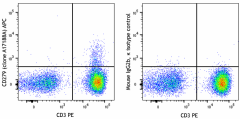
-

Human peripheral blood lymphocytes were stained with anti-human CD3 PE and anti-human CD279 (PD-1) (clone A17188A) APC (left) or mouse IgG2b, κ APC isotype control (right). -

Peripheral blood mononuclear cells were stimulated with PHA for 3 days and stained with anti-human CD279 (PD-1) (clone A17188A) APC (filled histogram) or mouse IgG2b, κ APC isotype control (open histogram).
| Cat # | Size | Price | Save |
|---|---|---|---|
| 379207 | 25 tests | ¥31,240 | |
| 379208 | 100 tests | ¥67,760 |
Programmed cell death protein 1 (PD-1), also known as CD279, is a 55 kD member of the immunoglobulin superfamily. CD279 contains the immunoreceptor tyrosine-based inhibitory motif (ITIM) in the cytoplasmic region and plays a key role in peripheral tolerance and autoimmune disease. CD279 is expressed predominantly on activated T cells, B cells, and myeloid cells. PD-L1 (B7-H1, CD274) and PD-L2 (B7-DC, CD273) are ligands of CD279 (PD-1) and are members of the B7 gene family. Evidence suggests overlapping functions for these two PD-1 ligands and their constitutive expression on some normal tissues and upregulation on activated antigen-presenting cells. Interaction of CD279 ligands results in inhibition of T cell proliferation and cytokine secretion.
Product DetailsProduct Details
- Verified Reactivity
- Human
- Antibody Type
- Monoclonal
- Host Species
- Mouse
- Immunogen
- Recombinant Human CD279 protein
- Formulation
- Phosphate-buffered solution, pH 7.2, containing 0.09% sodium azide and BSA (origin USA)
- Preparation
- The antibody was purified by affinity chromatography and conjugated with APC under optimal conditions.
- Concentration
- Lot-specific (to obtain lot-specific concentration and expiration, please enter the lot number in our Certificate of Analysis online tool.)
- Storage & Handling
- The antibody solution should be stored undiluted between 2°C and 8°C, and protected from prolonged exposure to light. Do not freeze.
- Application
-
FC - Quality tested
- Recommended Usage
-
Each lot of this antibody is quality control tested by immunofluorescent staining with flow cytometric analysis. For flow cytometric staining, the suggested use of this reagent is 5 µL per million cells in 100 µL staining volume or 5 µL per 100 µL of whole blood. It is recommended that the reagent be titrated for optimal performance for each application.
- Excitation Laser
-
Red Laser (633 nm)
- Application Notes
-
Clone A17188A antibody does not completely block the binding of clones NAT105, EH12.2H7, and A17188B to target cells.
- Product Citations
-
- RRID
-
AB_2922606 (BioLegend Cat. No. 379207)
AB_2922606 (BioLegend Cat. No. 379208)
Antigen Details
- Structure
- 55 kD type I transmembrane protein
- Distribution
-
Transiently expressed on CD4- and CD8- thymocytes, upregulated in thymocytes and splenic T and B lymphocytes, and is expressed on activated myeloid cells.
- Function
- Signaling, co-stimulation (co-inhibition)
- Interaction
- SHP-1 and SHP-2
- Ligand/Receptor
- PD-L1 (CD274) and PD-L2 (CD273)
- Cell Type
- Lymphocytes, T cells
- Biology Area
- Adaptive Immunity, Cancer Biomarkers, Cell Biology, Immuno-Oncology, Immunology, Inhibitory Molecules
- Molecular Family
- CD Molecules, Immune Checkpoint Receptors
- Antigen References
-
- Ishida Y, et al. 1992. EMBO J. 11:3887
- Francisco LM, et al. 2010. Immunol Rev. 236:219
- Gene ID
- 5133 View all products for this Gene ID
- UniProt
- View information about CD279 on UniProt.org
Other Formats
View All CD279 Reagents Request Custom Conjugation| Description | Clone | Applications |
|---|---|---|
| Ultra-LEAF™ Purified anti-human CD279 (PD-1) Antibody | A17188A | FC |
| FITC anti-human CD279 (PD-1) | A17188A | FC |
| APC anti-human CD279 (PD-1) | A17188A | FC |
| PE anti-human CD279 (PD-1) | A17188A | FC |
Customers Also Purchased
Compare Data Across All Formats
This data display is provided for general comparisons between formats.
Your actual data may vary due to variations in samples, target cells, instruments and their settings, staining conditions, and other factors.
If you need assistance with selecting the best format contact our expert technical support team.
-
Ultra-LEAF™ Purified anti-human CD279 (PD-1) Antibody

Human peripheral blood lymphocytes were stained with anti-hu... 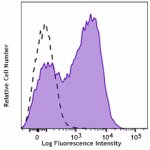
PHA stimulated (3 days) human peripheral blood lymphocytes w... -
FITC anti-human CD279 (PD-1)

Human peripheral blood lymphocytes were stained with anti-hu... 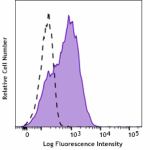
Peripheral blood mononuclear cells were stimulated with PHA ... -
APC anti-human CD279 (PD-1)

Human peripheral blood lymphocytes were stained with anti-hu... 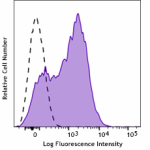
Peripheral blood mononuclear cells were stimulated with PHA ... -
PE anti-human CD279 (PD-1)

Human peripheral blood lymphocytes were stained with anti-hu... 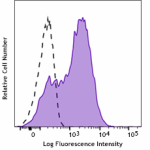
Peripheral blood mononuclear cells were stimulated with PHA ...










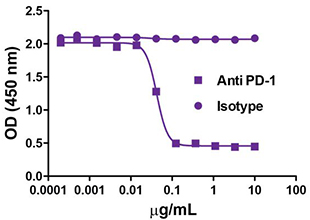

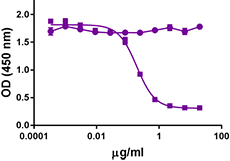



Follow Us